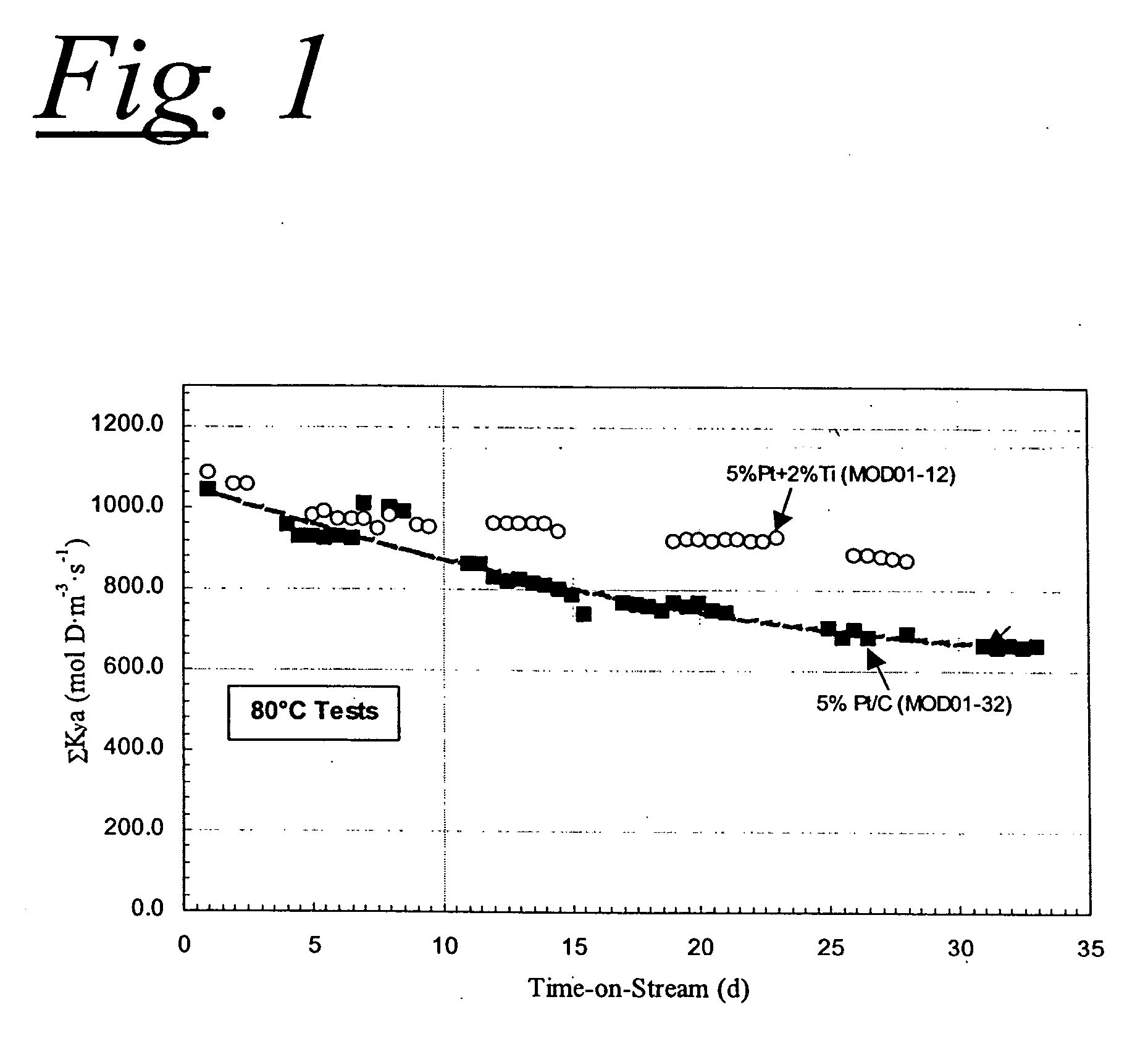Wetproofed catalysts for hydrogen isotope exchange
a hydrogen isotope and catalyst technology, applied in the direction of isotope separation, metal/metal-oxide/metal-hydroxide catalysts, inorganic chemistry, etc., can solve the problems of large capital expenditure, large energy consumption of girdler-sulphide process, and high cost of ammonia-hydrogen catalytic exchange, so as to reduce the cost of isotope exchange catalyst, reduce the cost of catalyst, and improve the economics of the process
- Summary
- Abstract
- Description
- Claims
- Application Information
AI Technical Summary
Benefits of technology
Problems solved by technology
Method used
Image
Examples
example 1
Process for Making a 5% Pt+2% Ti on Carbon XC-72R Catalyst
[0021] A small batch of the bimetallic catalyst was prepared from 25 g of XC-72R carbon. About 4.6 g of Na6Pt(SO3)4 and 2.1 g of TiCl4 using the procedure outlined in U.S. Pat. No. 4,082,699. This catalyst powder was then mixed with Teflon®D 30 in a 1:1 ratio and coated onto a 28 mesh stainless steel screen with 0.0075-inch wire diameter in the manner described in U.S. Pat. No. 4,143,123.
example 2
Process for Making a 5% Pt+2% Cr on Carbon XC-72R Catalyst
[0022] A small batch of catalyst powder was prepared from 25 g of XC-72R carbon, about 4.7 g of Na6Pt(SO3)4, and about 10.7 g of chromium nitrate nanohydrate, Cr(NO3)3.9H2O, using the procedure outlined in U.S. Pat. No. 4,082,699. This catalyst powder was mixed with Teflon® 30 in a 1:1 ratio and coated onto a 28 mesh stainless steel screen with 0.0075-inch wire diameter in the manner described in U.S. Pat. No. 4,143,123.
[0023] A number of the catalyst test samples [5% Pt+2% Au, 7% Pt+3% Pd and 5% Ni+5% Pt on XC-72R] used for comparison purposes were prepared by conventional co-impregnation methods rather than co-precipitation.
[0024] Most of the Ni catalysts with or without Cr were prepared using NiCl2 or Ni(NO3)2 and Cr(NO3)3 by precipitating with sodium carbonate on different supports such as carbon or Silicalite. Exceptions were 5% Ni on carbon (by impregnation), 15% Ni+0.1% Pd on XC-72R (by chemical deposition), 8% Ni+2...
PUM
| Property | Measurement | Unit |
|---|---|---|
| temperatures | aaaaa | aaaaa |
| weight | aaaaa | aaaaa |
| temperatures | aaaaa | aaaaa |
Abstract
Description
Claims
Application Information
 Login to View More
Login to View More - R&D
- Intellectual Property
- Life Sciences
- Materials
- Tech Scout
- Unparalleled Data Quality
- Higher Quality Content
- 60% Fewer Hallucinations
Browse by: Latest US Patents, China's latest patents, Technical Efficacy Thesaurus, Application Domain, Technology Topic, Popular Technical Reports.
© 2025 PatSnap. All rights reserved.Legal|Privacy policy|Modern Slavery Act Transparency Statement|Sitemap|About US| Contact US: help@patsnap.com

